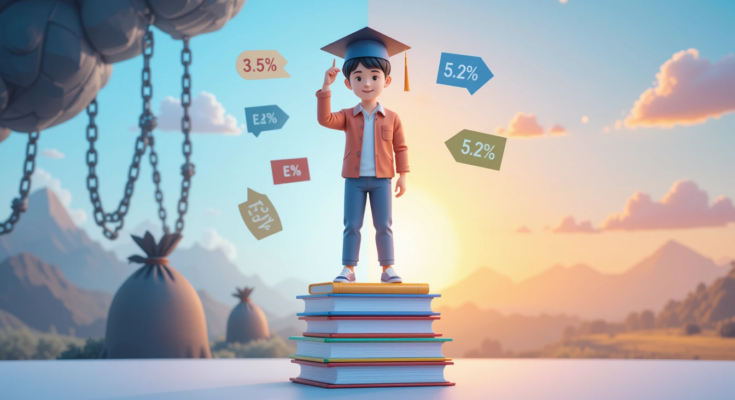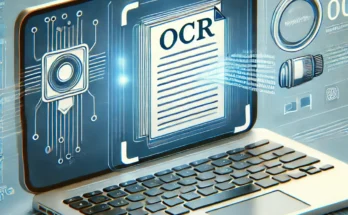Student loan interest rates directly impact your repayment costs. A lower rate means paying less over time, while a higher rate can add thousands to your debt. This guide explains how rates work, current averages, and strategies to secure the best rate possible.
How Student Loan Interest Rates Work
Interest rates represent the annual cost of borrowing, expressed as a percentage of your loan balance. Lenders use this rate—along with your loan amount and term—to calculate monthly payments.
Each payment first covers accrued interest, then reduces your principal balance. Understanding rates helps you:
✔ Estimate total repayment costs
✔ Compare loan offers effectively
✔ Identify refinancing opportunities
Key Factors That Affect Student Loan Rates
1. Federal vs. Private Loans
| Loan Type | Rate Type | 2023-24 Rates | Notes |
|---|---|---|---|
| Federal Undergraduate | Fixed | 5.50% | Set by Congress annually |
| Federal Graduate | Fixed | 7.05% | Higher than undergrad rates |
| Federal Parent PLUS | Fixed | 8.05% | Credit check required |
| Private Loans | Fixed/Variable | 4.5%–17% | Depends on creditworthiness |
Federal loans have standardized rates, while private lenders set rates based on:
- Credit score
- Income
- Loan term
- Co-signer eligibility
2. Credit Score Impact
- Federal loans: No credit check (except Parent PLUS).
- Private loans: Rates drop significantly with a 700+ FICO score.
3. Variable vs. Fixed Rates
- Fixed: Stays the same (federal loans only offer fixed).
- Variable: Starts lower but fluctuates with market trends (private loans only).
Current Average Student Loan Interest Rates (2024)
| Loan Type | Fixed Rate Range | Variable Rate Range |
|---|---|---|
| Federal Undergraduate | 5.50% | N/A |
| Federal Graduate | 7.05% | N/A |
| Private Undergraduate | 4.5%–14% | 3.5%–12% |
| Private Graduate | 5%–17% | 4%–15% |
Rates updated March 2024. Always verify with lenders.
What’s Considered a “Good” Rate?
- Federal loans: Any rate at or below the annual standard (e.g., ≤5.50% for undergrads).
- Private loans: Aim for ≤6% fixed or ≤4% variable (with excellent credit).
Comparison to Other Loans:
- Mortgages: ~6–7% (secured by property)
- Auto loans: ~5–9% (secured by vehicle)
- Credit cards: 18–30% (unsecured)
How High Rates Increase Your Costs
Example: $30,000 loan over 10 years
| Interest Rate | Monthly Payment | Total Interest Paid |
|---|---|---|
| 5% | $318 | $8,183 |
| 7% | $348 | $11,799 |
| 10% | $396 | $17,512 |
A 2% rate hike adds $4,300+ in interest!
6 Ways to Secure a Lower Rate
- Prioritize federal loans – Lower fixed rates and flexible repayment options.
- Improve your credit – Pay bills on time, reduce debt, and correct errors.
- Apply with a co-signer – Boosts approval odds for private loans.
- Compare lenders – Use tools like Credible or NerdWallet.
- Choose autopay – Many lenders offer a 0.25% discount.
- Refinance later – If rates drop or your credit improves.
FAQ: Student Loan Interest Rates
How often do federal rates change?
Annually (July 1). Existing loans keep their original rate.
Do refinancing rates change over time?
Yes—refinance again if rates improve.
Is variable or fixed better?
Fixed for stability; variable if you’ll repay quickly.
Can I lower my federal loan interest rate?
No, but income-driven plans reduce monthly payments.
Key Takeaways
✅ Federal rates are fixed and typically lower than private loans.
✅ Private loans offer variable rates, which risk future increases.
✅ A “good” rate is at or below the federal benchmark for your loan type.
✅ Even a 1% difference can save thousands over time.
Next Steps:
- Check your current rates at StudentAid.gov (federal) or lender sites (private).
- Use a student loan calculator to compare scenarios.
Need help? Consult a nonprofit credit counselor at NFCC.org.
Rate Disclaimer
Rates shown are estimates as of March 2024. Verify terms with lenders. This is not financial advice.
Would you like a section on state-specific loan programs or refinancing case studies? Let me know how to tailor this further!
if you have any issue and query please contact us


